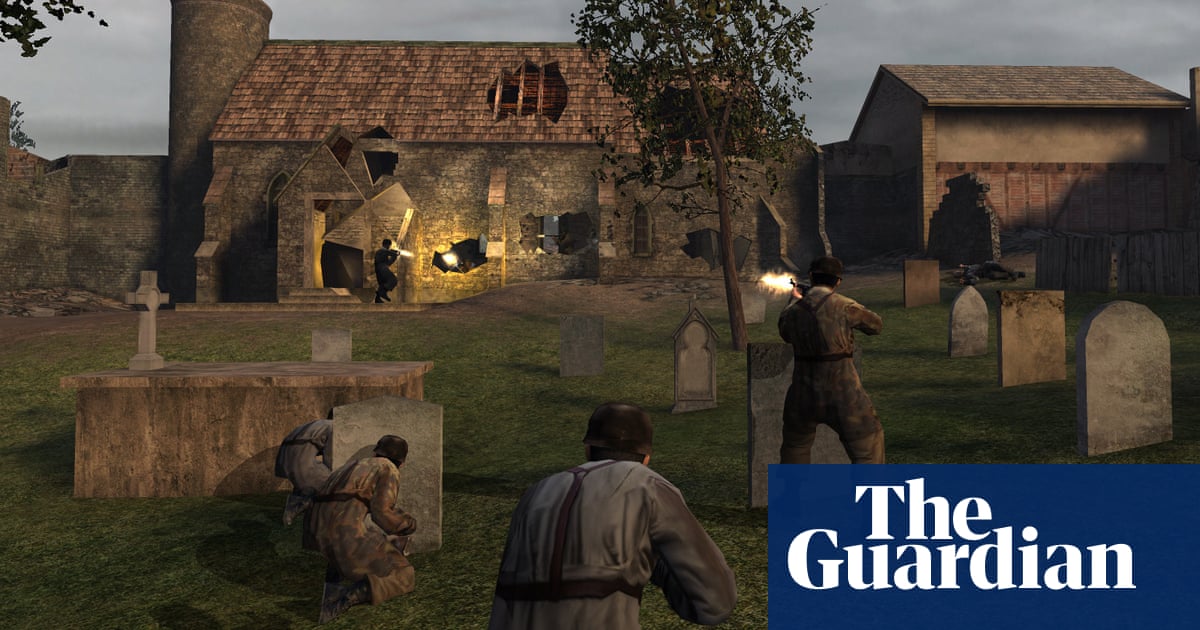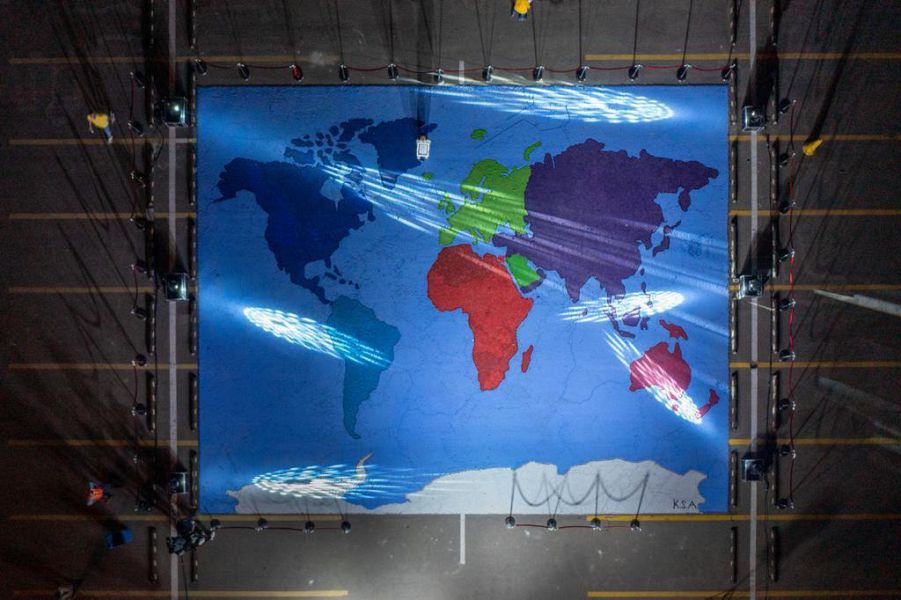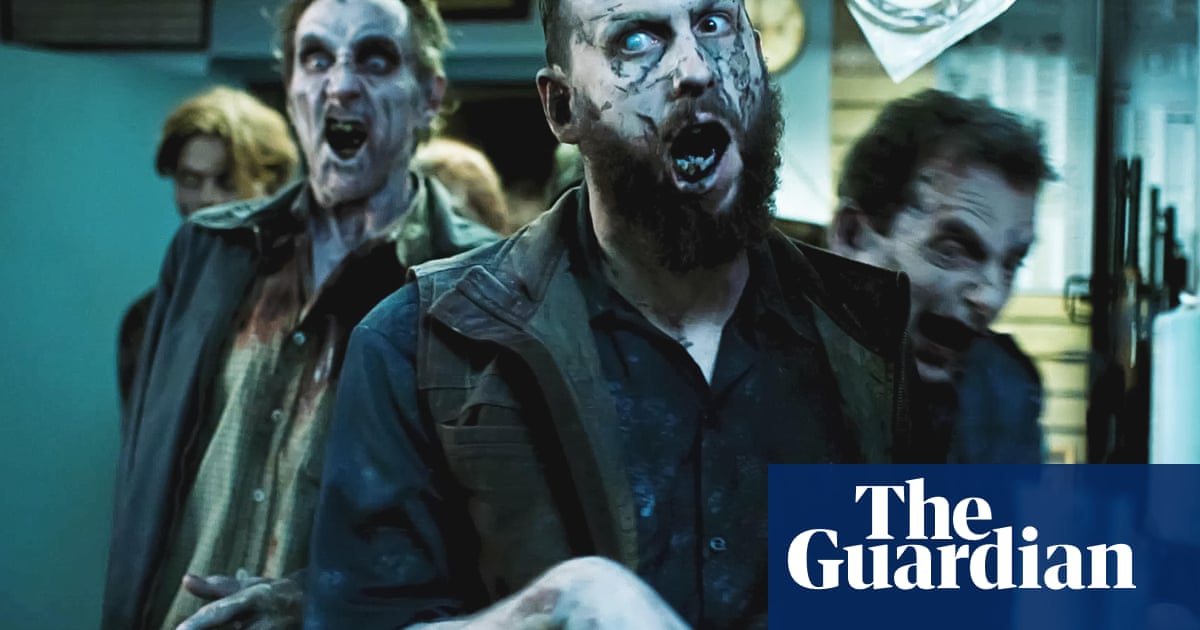
What struck you most at the time was the sheer cacophony of it. The explosions, the gunfire from dozens of other soldiers around you, the sheer chaos and confusion. While other first-person shooters of the era usually put the player in full control of a single character taking on whole platoons of enemies singlehandedly, the original Call of Duty, which is 20 years old this week, dumped you into the middle of major onslaughts, surrounded by AI comrades. You weren’t Rambo, you were just a grunt, a cog in the second world war machine.
It wasn’t quite the first game to do this. The Medal of Honor titles from Electronic Arts were already dabbling in the whole idea of the epic battlefield shooter, but when the creative team behind the best instalment in that series Allied Assault, grew dissatified with life under EA, 22 of them set up their own studio and signed a publishing deal with Activision. That was in 2002, and the studio was Infinity Ward. Barely a year later Call of Duty arrived.
What the game added was epic scope and technical brilliance. You play as not one, but a series of soldiers fighting in various theatres, starting with the D-day landings, moving on to Operation Tonga and then the battle of Stalingrad. In this way the game gave you a swooping overview of the closing months of the war, dropping you into the most impactful moments. The pacing is almost operatic, a discombulating mix of epic battlefield overtures and quieter more intense duet-like sequences as players crept behind enemy lines. One moment you’re parachuting into occupied France, the next you’re defending a position against enemy tanks or scuttling through the sewers of a ruined Russian city. The tumult is accentuated by the excellent audio design, with its authentic gun sounds (different for each of the weapons) and ear-bleeding explosions, which were accompanied by visual distortions simulating the shock of a nearby detonation. It was all about sensory experience.
A key element Infinity Ward concentrated on was AI. When you went into battles in CoD, you did so with allies who could hold their own, using at the time sophisticated pathfinding and decision making capabilities to create the sense of a larger war effort. In this way, the game truly created a cinematic sense of action and consequence. Named computer-controlled characters would chatter between themselves and might fall beside you as bullets whizzed past. This was naturalism in the Hollywood style, filled with moments of tragedy and euphoric victory.
Multiplayer was also an important component from the start. Call of Duty had Deathmatch and Team Deathmatch modes of course, but also added the more tactical Search and Destroy and Retrieval options which removed respawns and got small squads of opposing players to carry out missions against each other rather than just shooting. Importantly, the multiplayer element was created using a scripting language that was made accessible to PC players so modders could create their own versions. The game also introduced the now ubiquitous Kill Cam, in which downed players got to look through the viewpoint of the opponent who took them down, thereby watching their own demise. This became a useful tool, teaching newbies how to defend themselves better but also highlighting the sniping spots so that campers (players who stay in the same spot for the whole match) could be dealt with swiftly.
We toss around the term cinematic these days, but when Call of Duty arrived it was a game that truly innovated in how video games could use bombast, scope, audio and narrative to put players into their own war stories. It brought some fresh ideas but it also refined many of the emerging archetypes of the military shooter, its multiplayer modes operating in an exciting space between Counter-Strike and Quake. Did we see then what Call of Duty would become as a brand? Maybe. It was telling that Activision launched this first title as the beginning of a franchise rather than a lone title. It was also telling that Microsoft quickly got in touch to secure the sequel as an Xbox 360 launch title. In the absence of a Halo title it was Infinity Ward’s sequel that really launched the concept of Microsoft’s new console as an online machine, and when Call of Duty 4 arrived two years later (after Treyarch took charge of number three), the status of the series was secured for good.
Twenty years and more than 400m sales later, Call of Duty is now one of the top grossing names in the video game industry. It has been a controversial history, the series often criticised for its western-centric worldview, clumsy stereotyping and fetishisation of military power. The whole industry has changed immeasurably since 2003. But what that first game did – the way it merged historical authenticity with cinematic effects and blistering acton, the way it brought those same elements into multiplayer – remains the building blocks of the brand, and of epic mainstream game design in general.












